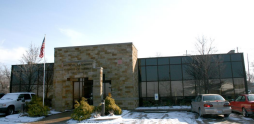Reportable Deaths
When any person dies as a result of criminal or other violent means, or by casualty, or by suicide, or suddenly when in apparent good health, or in any suspicious or unusual manner, the physician called in attendance, or any member of an emergency service and/or squad, or law enforcement agency who obtains knowledge thereof arising from his or her duties shall immediately notify the Department of the Medical Examiner/Coroner of the known facts concerning the time, place, manner, and circumstances of such death, and any other information which is required pursuant to sections 313.01 to 313.22 of the Ohio Revised Code.
Although the types of death listed here are to be reported to our office, not all of these reported deaths will be certified by the Medical Examiner. Each reported death will be evaluated by a forensic death investigator and reviewed by a forensic doctor to determine if the death falls under the Medical Examiner’s jurisdiction. If the death does not fall under the Medical Examiner’s jurisdiction, that death will be certified by a community clinician as a natural death.
Types of Reportable Deaths
Accidental
Unnatural death caused by an accident including those which are work-related.
By means of:
1. Asphyxiation by gagging or foreign substance, including food in the airway, compression of the airway or chest, by hand, material, or ligature; drowning; hanging; cyanide; deprivation of oxygen; carbon monoxide; and/or other gases causing suffocation.
2. Vehicular accidents involving automobile, bus, train, motorcycle, bicycle, watercraft, ATV, snowmobile, or aircraft. This encompasses driver, passenger, pedestrian or related non-passenger, such as being struck by parts flying or thrown from the vehicle.
3. Blunt trauma or other forms of mechanical violence.
4. Electrical shock.
5. Burns from fire, liquid, chemical, radiation, or electricity.
6. Explosion.
7. Carbon monoxide poisoning. (Resulting from natural gas, automobile exhaust, or other).
8. Falls with injury occurring within the previous month or where there are injuries or fractures contributing to the death regardless of timeframe.
9. Cutting or stabbing.
10. Firearm injuries.
11. Deaths from electrocution.
12. Drowning (actual or suspected).
13. Weather related deaths including those involving tornado, lightning, heat exhaustion, or hypothermia.
14. Drug overdose from medication, chemical, or poison ingestion, whether it is actual or suspected. This includes any medical substance, narcotic or alcoholic beverage, whether sudden, short, or long term survival has occurred.
15. Stillborn or newborn infant death where there is a recent or past traumatic event involving the mother, such as vehicular accident, homicide, suicide attempt, or drug ingestion that may have precipitated delivery or had a detrimental effect to the newborn.
Homicide
Killing of one person by another. By any means, suspected or known.
Suicide
Deliberate taking of one’s own life. By any means, suspected or known.
Sudden
If death of a person when in apparent good health or in any suspicious or unusual manner.
Including:
1. Any person pronounced dead on arrival (DOA) at any hospital, deaths occurring within an emergency department of a hospital, or within a doctor's office shall be reported.
2. Any infant or young child found dead shall be reported, including those from apparent Sudden Infant Death Syndrome.
3. All stillborn infants where there is suspected or actual injury to the mother or infant.
4. All deaths occurring within 24 hours of admission to a hospital.
5. Deaths occurring on the street, at home, in a public place, or at a place of employment.
6. Deaths under unknown circumstances whenever there are no witnesses or where little or no information can be elicited concerning the deceased.
7. Deaths occurring while in any jail, confinement, or custody.
8. When the decedent has a history of drug use, abuse, or addiction.
9. When the decedent has a history of alcohol use or abuse.
Occupational
Instances in which past or present employment may have caused or contributed to death by trauma or disease. Deaths in this classification include caisson disease (bends), industrial infections, pneumoconiosis, exposure to toxic waste or product, fractures, burns or any other injury received during employment or as a result of past employment, which may have contributed to the death.
Special Circumstances
Any deaths where any of the following circumstances are a factor:
1. Any death involving allegations of medical malpractice or poor medical/surgical care.
2. Any maternal or infant death where there is illegal interference by unethical or unqualified persons or self-induction.
3. "Delayed Death" where the immediate cause of death may have been related to an earlier injury. The injury may have occurred days, weeks, months, or even years before death and is responsible for initiating the sequence of medical conditions or events leading to death. This would be considered a Medical Examiner's case and is therefore reportable. The most common examples of this type of case are:
A) Past traffic accidents with debilitating injury and long term care in a nursing home.
B) Hip fractures of the elderly where there is a downward course of the condition after surgery.
C) Gunshot, shotgun, knife wound, beating, assaults with subsequent death months to years later, but a consequence of the assault.
4. Deaths of individuals visiting from out of state.
Therapeutic
1. Death occurring while under the influence of anesthesia, during the anesthetic induction, during the post-anesthetic period without the patient regaining consciousness, and including death following long term survival if the original incident is thought to be related to the surgical procedure and/or anesthetic agent.
2. Death during or following any diagnostic or therapeutic procedure where the death is thought to be directly related to the procedure or complications from said procedure.
3. Death due to the administration of drugs, serum, vaccine, or any other substance for any diagnostic, therapeutic, or immunological purpose.
Questionable or Suspicious
When the origin of the cause of death falls into any of the previous classifications, such a death must be reported to the Department of the Medical Examiner, even though the survival period subsequent to the onset is over 24 hours.
Only the Medical Examiner/Coroner can legally sign a death certificate of a person who had died as a direct or indirect result of any cause listed in the previously mentioned reportable death.
Not all cases fall in the above categories. After the investigation is completed, many will be returned to the jurisdiction or institution where the death certificate will be signed by the attending physician as a natural death.







